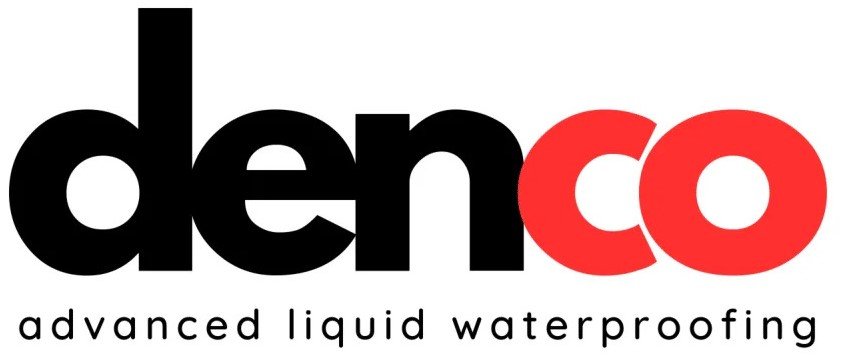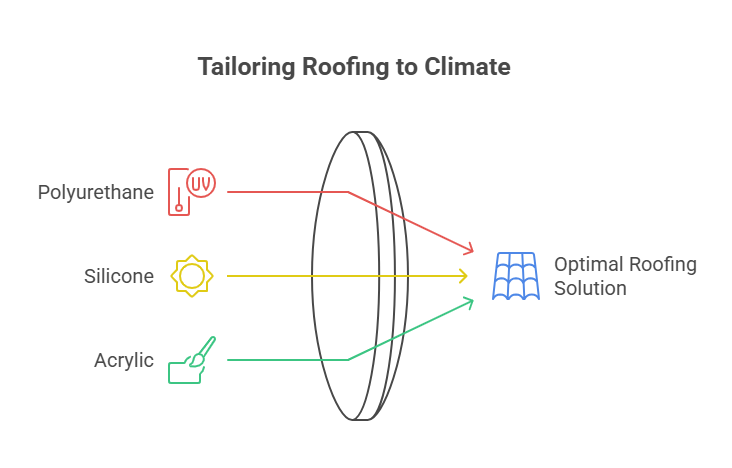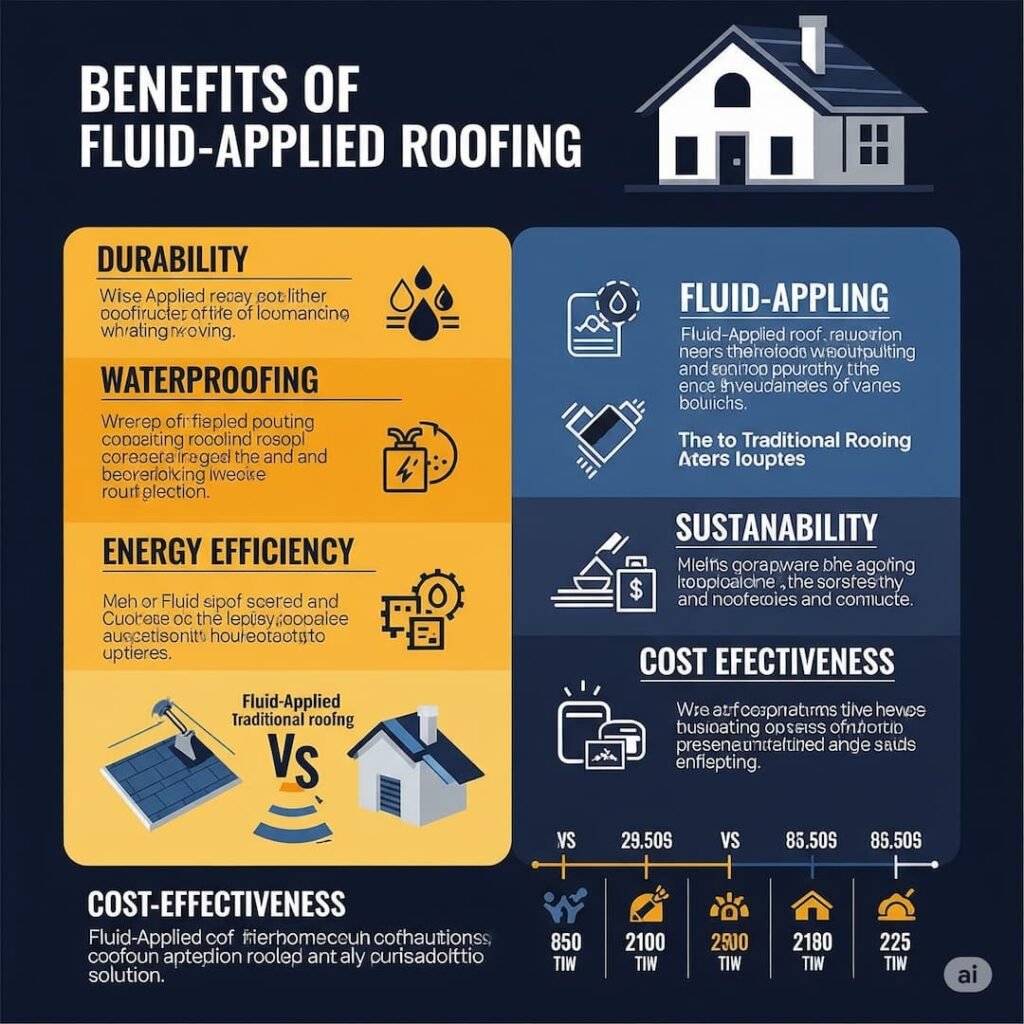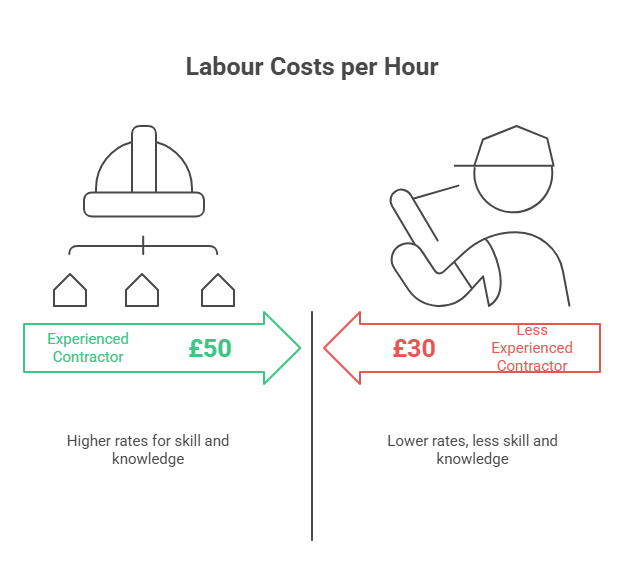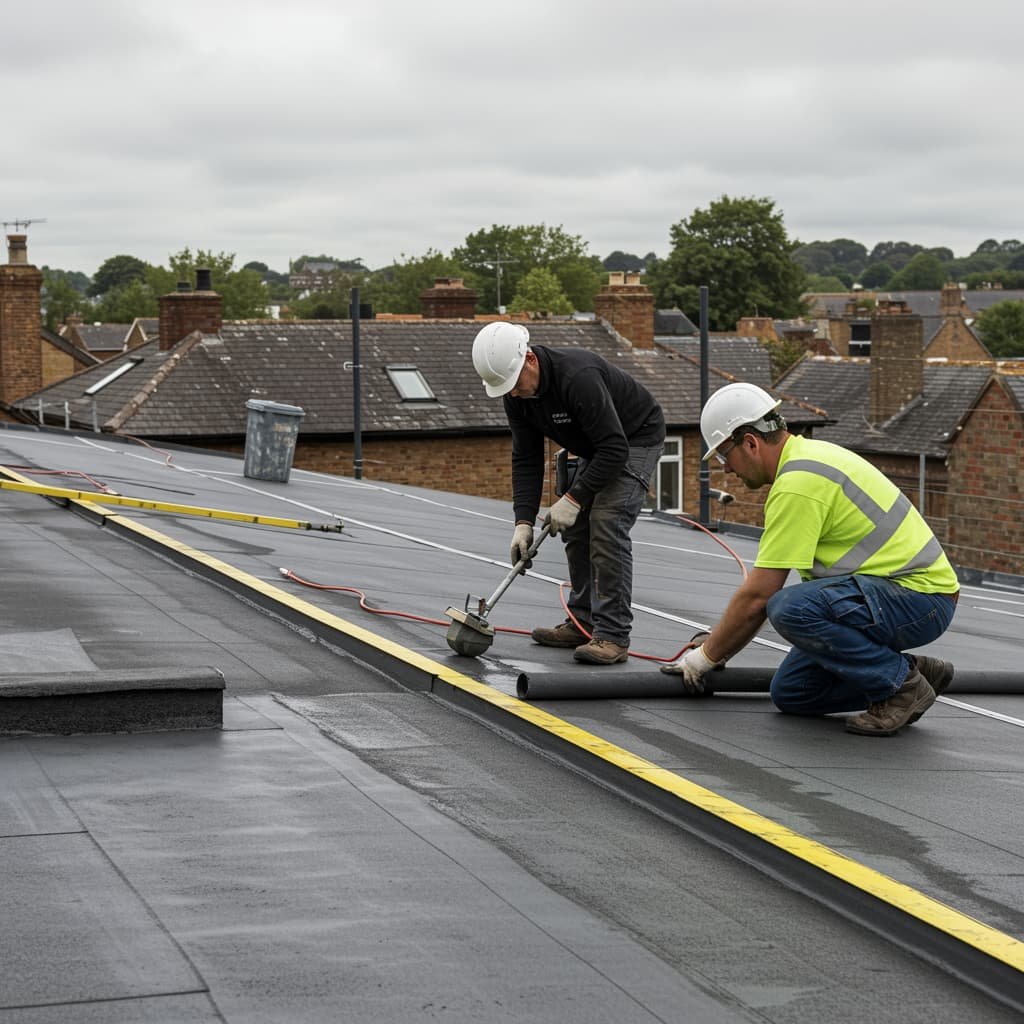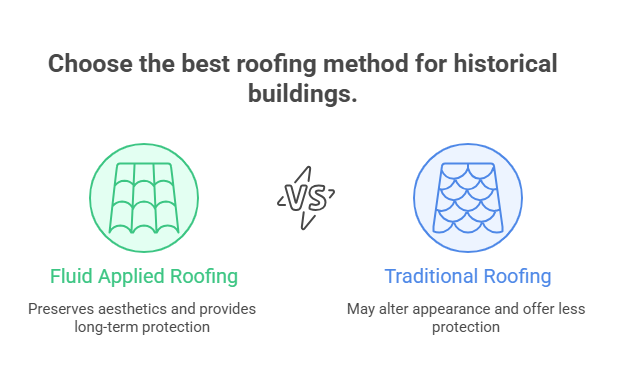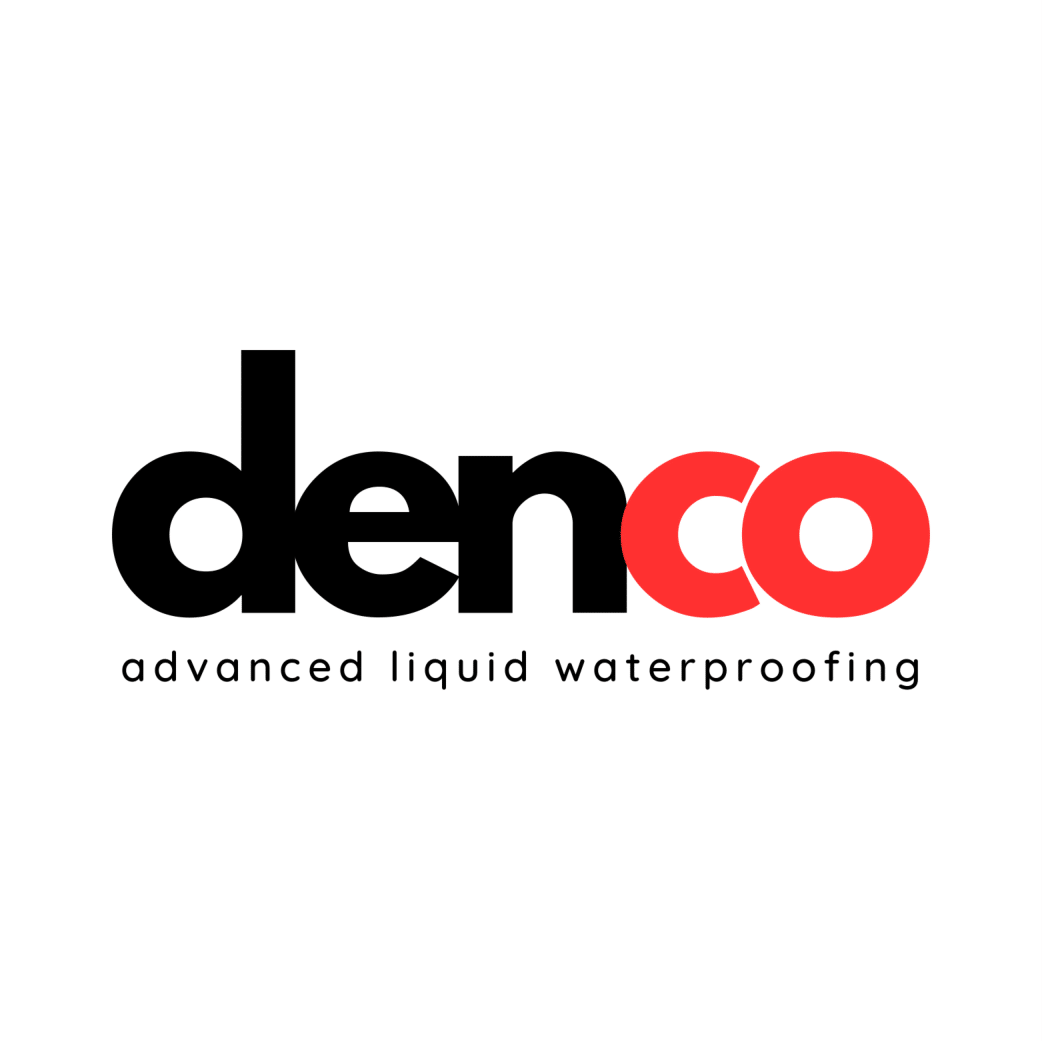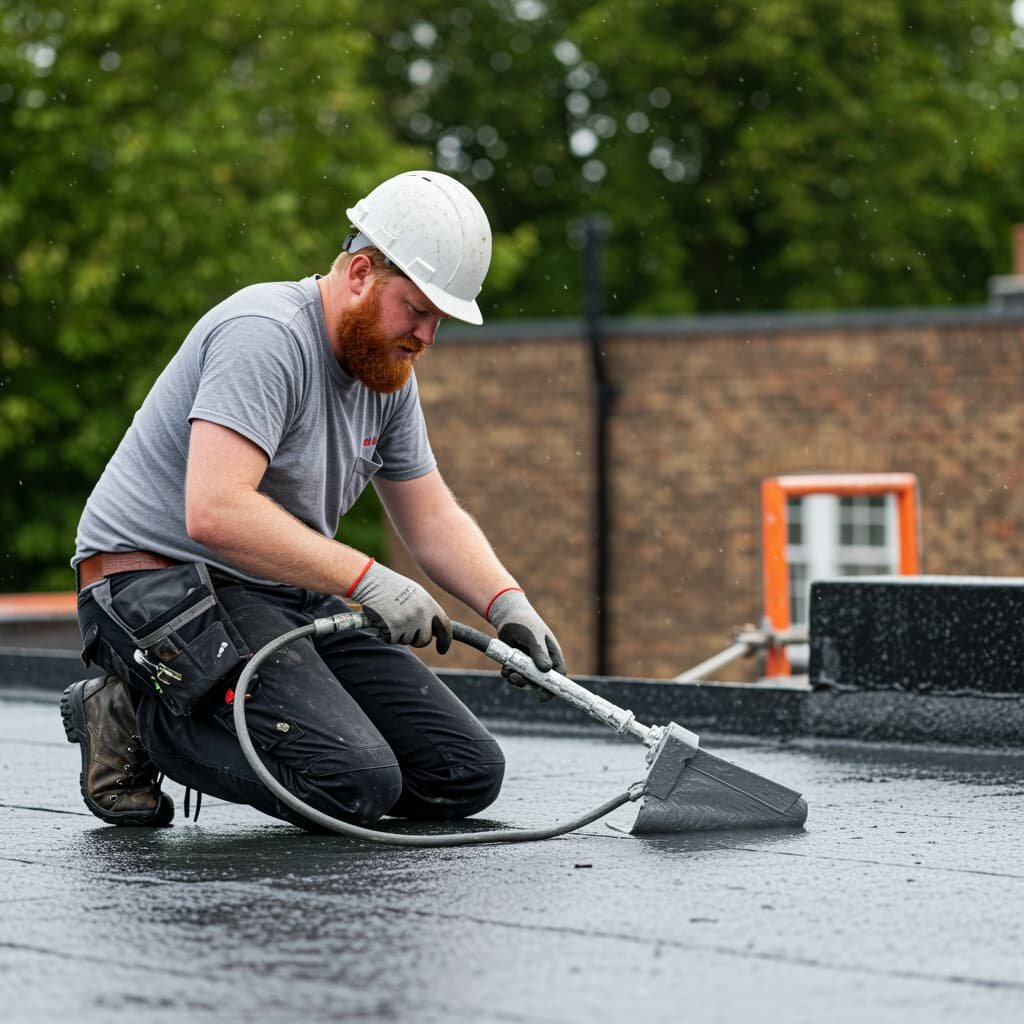
Contents
Our Services
Liquid waterproofing
What Client Say
I would just like to say a big thank you to the Denco team for the work they recently did on our roof, such a great finish. They repaired the old asphalt and covered it with a lovely new grey liquid coating. Leaving the premises very clean and tidy, we are so pleased with the end result. Thank you again guys.
Thank you to Lee and his colleagues from Denco Waterproofing for the outstanding job that they have completed on our balcony. Very impressed with there standard of workmanship and will definitely be having them back to replace the flat roof on our extension soon.
Great work by the Denco Waterproofing lads, very hard working, extremely tidy and the attention to detail was top class. Well done job all round. Many thanks.
Need help?
Don't hesitate to contact us
Send a message
Imagine you’re standing in the heart of London, surrounded by iconic architecture and bustling city life. As you look up at the skyline, have you ever wondered what protects these buildings from the elements?
The secret often lies in a cutting-edge solution known as fluid-applied roofing. If you want to keep your property safe from London’s crazy weather, try this new roofing method. You’ll discover the benefits and uses of fluid-applied roofing. This method is becoming more popular throughout the city.
Get ready to explore how this modern technique could be the perfect fit for your roofing needs. Stay with us, and you might find the key to keeping your building strong for years.
Fluid Applied Roofing Basics
London’s skyline keeps changing. As it does, the need for new roofing solutions, like fluid applied roofing, grows. This modern method creates a strong, waterproof barrier. It’s perfect for shielding buildings from the city’s unpredictable weather. Knowing the basics of fluid applied roofing is key for homeowners and pros. It helps protect their investments.
Fluid applied roofing systems are liquid-based coatings. These coatings are applied directly to roof surfaces to create a seamless membrane. They are adaptable and can fit any shape or size, making them perfect for London’s diverse architecture.
- Seamless Application: Eliminates seams and joints, reducing potential leak points.
- Versatility: Suitable for various roof types, including flat, pitched, and domed roofs.
- Weather Resistance: Offers excellent protection against rain, wind, and UV exposure.
- Energy Efficiency: Reflective properties can help reduce cooling costs.
Application Process
The application process is straightforward yet requires precision. Professionals start by cleaning the roof surface thoroughly. Next, a primer is applied to ensure strong adhesion. The fluid coating is then sprayed or rolled on, forming a continuous membrane as it dries.
Types Of Fluid Applied Roofing Materials
| Material Type | Features |
| Polyurethane | Highly flexible and durable, excellent for extreme temperatures. |
| Silicone | Exceptional UV resistance, ideal for sunny regions. |
| Acrylic | Cost-effective and easy to apply, good for moderate climates. |
Maintenance And Longevity
Fluid applied roofing systems are low-maintenance. Regular inspections help ensure longevity. Repairs are simple; new layers can be applied over existing coatings without removal. This adaptability makes fluid applied roofing a practical choice for long-term roof protection.
Types Of Fluid Applied Roofing
Fluid applied roofing is becoming popular in London. It offers seamless and long-lasting protection. This roofing type offers a waterproof layer. It helps protect buildings from the city’s frequent rains. There are several types of fluid applied roofing systems, each with unique benefits. Understanding these can help you choose the right one for your needs.
Polyurethane Systems
Polyurethane systems offer a robust solution for fluid applied roofing. They are known for their flexibility and strength, making them ideal for areas with fluctuating temperatures. These systems provide a seamless coating, which is crucial for preventing leaks.
Here are some benefits of polyurethane systems:
- Durability: These coatings can withstand harsh weather conditions.
- Flexibility: They adapt well to temperature changes without cracking.
- Easy Maintenance: Minimal upkeep is needed once applied.
Polyurethane systems are often chosen for their long-lasting nature. They are perfect for roofs that need a tough, resilient layer.
Acrylic Systems
Acrylic systems are another popular choice for fluid applied roofing in London. They are renowned for their UV resistance and environmental benefits. These systems are water-based, making them a more eco-friendly option.
Key features of acrylic systems include:
- UV Resistance: Protects against sun damage.
- Cost-Effective: Generally more affordable than other systems.
- Eco-Friendly: Water-based and environmentally conscious.
Acrylic coatings are often preferred for their reflective properties, which help reduce energy costs. They are suitable for buildings looking to improve energy efficiency.
Silicone Systems
Silicone systems provide excellent waterproofing capabilities. They are highly resistant to ponding water, a common issue in London’s rainy climate. Silicone coatings create a barrier that prevents water infiltration.
Significant advantages of silicone systems are:
- Waterproofing: Exceptional resistance to water damage.
- Longevity: Offers a long-lasting solution with minimal reapplications.
- Seamless Application: Ensures no water can penetrate the surface.
Silicone systems are often selected for their ability to endure extreme weather conditions. They are perfect for flat roofs where water tends to accumulate.
Benefits Of Fluid Applied Roofing
Fluid applied roofing is becoming a popular choice for many in London. It involves putting a liquid coat on a roof. It hardens and creates a strong, protective layer. This method is not only innovative but also practical. Its benefits make it an attractive option for homeowners and businesses alike. This post highlights the main benefits of fluid applied roofing. It explains why this option is becoming popular in London.
Seamless Application
One of the standout benefits is its seamless application. Traditional roofing systems often have seams or joints, which can be weak points. These weak points are prone to leaks and other issues. Fluid applied roofing eliminates this concern.
Here are some reasons why its seamless nature is advantageous:
- No Seams or Joints: The application process results in a continuous layer, removing potential leak spots.
- Adaptability: It conforms to any roof shape, including curves and angles.
- Quick Installation: Reduces downtime during application, minimising business interruptions.
A seamless application also means fewer repairs over time. This leads to cost savings and peace of mind. The simplicity and effectiveness of this method make it a preferred choice in London’s varied climate.
Durability
Durability is another significant benefit of fluid applied roofing. London’s weather can be unpredictable, with rain, wind, and occasional snow. A durable roofing system is essential.
Fluid applied roofs offer:
| Feature | Benefit |
| Weather Resistance | Withstands harsh weather without damage. |
| UV Protection | Prevents sun damage, extending roof life. |
| Flexibility | Adapts to temperature changes without cracking. |
Such durability ensures that your roof remains intact for years. This long lifespan reduces the need for frequent replacements. It also means fewer disruptions and lower maintenance costs. Fluid applied roofing is built to last, making it a wise investment.
Energy Efficiency
Energy efficiency is a growing concern for London residents. Fluid applied roofing contributes positively in this area. It can reduce energy costs significantly.
Consider these points:
- Reflective Properties: Reflects sunlight, keeping buildings cooler in the summer.
- Insulation: Provides an extra layer, helping to retain heat during winter.
- Reduced HVAC Load: Less strain on heating and cooling systems, saving energy.
This increased efficiency leads to savings on utility bills. It also has environmental benefits. By reducing energy consumption, fluid applied roofs contribute to a greener London. It’s a practical choice for those seeking sustainability alongside performance.
Installation Process
Fluid applied roofing is gaining popularity in London. It’s a seamless and flexible roofing solution. The installation process is a critical part of its effectiveness. Proper installation ensures durability and long-lasting protection. Let’s explore the key steps involved in the installation process.
Surface Preparation
The first step in installing a fluid applied roofing system is surface preparation. This step ensures the roof surface is ready to bond with the fluid material. A well-prepared surface enhances the adhesion and longevity of the roofing system.
Surface preparation includes several crucial tasks:
- Cleaning: Remove dirt, debris, and any existing coatings. A clean surface is essential for proper adhesion.
- Repairing: Fix any cracks or damages on the roof. This creates a smooth surface for the fluid application.
- Priming: Apply a primer to the surface. This step improves the adhesion of the fluid material.
Application Techniques
After surface preparation, the next step is applying the fluid material. Proper application techniques are vital for a successful installation.
Here are some common application techniques:
- Spraying: Use spray equipment for even distribution. This method is fast and efficient.
- Rolling: Rollers help in spreading the fluid evenly. Suitable for smaller areas or detailed work.
- Brushing: Use brushes for precision work. Ideal for corners and edges.
Each technique has its benefits. Choose based on the roof’s size and complexity. For large, open areas, spraying is often preferred. Rolling and brushing are better for intricate areas.
Proper application ensures a uniform layer. This layer acts as a barrier against water and weather elements.
Curing Process
The curing process is the final step in the fluid applied roofing installation. It involves allowing the applied fluid to set and harden. Curing is crucial for the roof’s performance and durability.
Key aspects of the curing process include:
- Time: Curing time varies with materials. It usually ranges from a few hours to several days.
- Conditions: Ensure suitable weather conditions. Avoid application during rain or extreme temperatures.
- Testing: Conduct tests to ensure proper curing. This includes checking for any tackiness or uneven areas.
Here’s a simple table illustrating the typical curing process timeline:
| Stage | Duration |
| Initial Set | 2-4 hours |
| Full Cure | 24-72 hours |
A well-cured roof provides optimal protection. It ensures the roof is ready to withstand London’s diverse weather conditions.
Maintenance And Care
Fluid applied roofing is becoming a popular choice in London. This roofing type is known for its durability and adaptability. But like any roofing system, it requires proper maintenance and care. Understanding how to maintain a fluid applied roof ensures its longevity and efficiency. Let’s dive into the essential steps for keeping your roof in top condition.
Regular Inspections
Regular inspections are crucial for maintaining fluid applied roofing. These inspections help identify potential problems early. Early detection can prevent costly repairs. Here are some tips for effective inspections:
- Conduct inspections twice a year, ideally in spring and fall.
- Check for signs of wear, such as cracks or bubbles.
- Inspect flashing and joints for any gaps or weaknesses.
In addition to scheduled inspections, it’s wise to check the roof after severe weather. Strong winds and heavy rain can cause damage. Keeping a checklist can help ensure nothing is overlooked.
Cleaning Procedures
Keeping your fluid applied roof clean is essential. Dirt and debris can lead to deterioration over time. A clean roof performs better and looks better. Follow these cleaning tips:
- Sweep the roof to remove leaves and debris.
- Use a mild detergent and water for cleaning the surface.
- Avoid harsh chemicals that can damage the roofing material.
- Rinse thoroughly to remove soap residue.
It’s important to clean the roof carefully to avoid damaging the surface. Use soft bristle brushes for scrubbing. Pressure washers can be used, but with caution. Set the pressure low to prevent damage. Regular cleaning not only extends the roof’s life but also improves its energy efficiency. A clean surface reflects sunlight better, reducing cooling costs.
Repairing Damage
Addressing damage quickly is key to maintaining your roof’s integrity. Timely repairs save money and extend the roof’s life. Common types of damage include:
- Cracks and splits in the coating
- Blisters due to trapped moisture
- Punctures from falling debris
For small cracks or blisters, use a compatible patching material. Follow the manufacturer’s instructions for best results. More extensive damage may require professional repair. Consult a roofing expert if you’re unsure. Regularly checking for and repairing damage ensures the roof remains watertight. A proactive approach to maintenance can help avoid major issues down the line.
Cost Factors
Fluid applied roofing is becoming popular in London. Its seamless application and durability attract many users. Understanding the cost factors is crucial for making informed decisions. These factors include material costs, labour costs, and long-term savings. Each has a key role in shaping the cost and value of this roofing solution.
Material Costs
Material costs for fluid applied roofing can vary significantly. The type of fluid membrane chosen impacts the price. Common materials include silicone, polyurethane, and acrylic. Each has unique properties and costs:
- Silicone: Highly resistant to UV rays, offering long-lasting protection.
- Polyurethane: Known for its high durability and flexibility.
- Acrylic: Cost-effective but may require frequent maintenance.
Material costs also depend on the roof size and complexity. Larger roofs require more material, increasing costs. Intricate designs may need specialized membranes, further affecting prices.
| Material Type | Estimated Cost per Square Meter |
| Silicone | £15 – £20 |
| Polyurethane | £10 – £15 |
| Acrylic | £8 – £12 |
Choosing the right material can significantly impact the longevity and effectiveness of the roofing system.
Labour Costs
Labour costs are another critical factor in fluid applied roofing. Skilled professionals apply these membranes, ensuring a seamless and efficient process. Labour costs in London can vary based on several factors:
- Expertise: Experienced contractors often charge higher rates for their skill and knowledge.
- Project Size: Larger projects may offer economies of scale, reducing per square meter costs.
- Complexity: Complex roof designs require more time and effort, increasing labour expenses.
These costs typically range from £30 to £50 per hour, depending on the contractor’s experience and the project’s demands.
Hiring skilled labour ensures the application is done correctly, preventing future issues and potential repair costs.
Long-term Savings
Fluid applied roofing offers significant long-term savings. Its seamless nature reduces the risk of leaks, minimising repair costs. The durability of materials like silicone and polyurethane ensures longevity, reducing replacement frequency.
These roofs also provide excellent energy efficiency. Reflective surfaces lower heat absorption, reducing cooling costs during summer. This can lead to substantial savings on energy bills.
Consider the reduced maintenance needs. Fluid applied roofs require less upkeep compared to traditional roofing systems. This saves time and money over the roof’s lifespan.
Investing in fluid applied roofing may initially seem costly, but the long-term savings often outweigh the upfront expenses.
Choosing A Contractor
Fluid applied roofing is a popular choice in London for those seeking durability and a seamless finish. This roofing method involves applying a liquid membrane that cures into a solid, protective surface. It’s ideal for both new constructions and roof refurbishments. Choosing the right contractor for this task is crucial to ensure quality and longevity. With Denco Liquid Waterproofing, you can trust a skilled team to deliver a smooth, long-lasting result. Selecting the right professionals can make all the difference in achieving a successful roofing project.
Qualifications To Look For
Finding a qualified contractor is vital for fluid applied roofing. A skilled professional ensures the job is done right. Look for these qualifications:
- Experience: Contractors should have extensive experience in fluid applied roofing. Ask about previous projects and the outcomes.
- Certifications: Verify if the contractor is certified by recognised organisations. Certifications indicate their expertise and adherence to industry standards.
- Insurance: Ensure they have adequate insurance. This protects you from liability in case of accidents or damages.
Consider creating a table to compare potential contractors:
| Contractor | Experience | Certifications | Insurance |
| Denco Liquid Waterproofing | 35+ Years | Yes | Yes |
| Asphalt Sterp Repair | 100 Years | Yes | Yes |
Questions To Ask
Before hiring, asking the right questions is crucial. This helps gauge their suitability for your project.
- What is your experience with fluid applied roofing? Understand their familiarity with the method.
- Can you provide references? References offer insights into their work quality.
- What is your process? Learn about their approach and techniques.
- Do you offer warranties? Warranties protect your investment.
- How do you handle unexpected issues? It’s essential to know their problem-solving skills.
These questions help you make informed decisions. Clear communication is key to ensuring your needs are met.
Getting Quotes
Obtaining quotes from various contractors provides a clearer picture of the costs involved. This process helps ensure you receive fair pricing.
Steps to follow:
- Contact multiple contractors: Reach out to at least three professionals to get a variety of estimates.
- Detail your needs: Provide specifics about your roofing project to ensure accurate quotes.
- Compare quotes: Evaluate the cost, but also consider the services offered and the contractor’s reputation.
Look beyond the price. Consider the materials and timeline proposed. A detailed quote can reveal much about a contractor’s approach and reliability.
Common Misconceptions
Fluid applied roofing in London is gaining traction for its ease and versatility. Yet, common misconceptions still cloud its reputation. Many misunderstand its lifespan, performance, and cost. These myths deter property owners from exploring this innovative option. Let’s debunk these myths and shed light on the true benefits of fluid applied roofing.
Longevity Myths
Many believe fluid applied roofing lacks durability. They assume it wears out quickly. This is far from true. Fluid applied roofs are designed to last. Their strong resistance to weather elements ensures longevity.
- UV Resistance: The coatings withstand harsh sun rays.
- Waterproof Barrier: Prevents water infiltration, avoiding damage.
- Flexibility: Adapts to temperature changes, reducing cracks.
In London, weather fluctuations are common. Fluid applied roofing adjusts well. A well-maintained fluid roof can last over 20 years. Regular inspections and maintenance enhance its lifespan. Misconception: Fluid roofs are short-lived. Reality: Proper care extends their life significantly.
Performance Myths
Performance concerns are another myth. Some argue fluid applied roofing is ineffective. They doubt its protection capabilities. Fluid roofs are excellent at safeguarding structures. They offer:
- Thermal Insulation: Reduces heat transfer, saving energy.
- Seamless Application: Eliminates gaps, preventing leaks.
- Adhesive Strength: Bonds well, ensuring stability.
Fluid applied roofing performs well under pressure. London’s heavy rains pose no threat. Misconception: Fluid roofs underperform. Reality: They withstand diverse conditions efficiently. Their seamless nature ensures comprehensive coverage. Key takeaway: Fluid roofs excel in performance.
Cost Misunderstandings
Cost is a major concern. Many think fluid applied roofing is expensive. They compare it to traditional roofing costs. This misunderstanding arises from upfront expenses. Fluid roofing might seem costly initially. Yet, its long-term savings are substantial.
Fluid applied roofing saves money over time. Misconception: It’s costly. Reality: Long-term savings outweigh initial costs. Reduced maintenance and energy bills offer financial benefits. Key insight: Fluid roofing is cost-effective.
Case Studies In London
Fluid applied roofing is gaining traction in London. It’s a flexible and durable solution for protecting buildings. This method uses a liquid coating. It solidifies to form a seamless, waterproof layer. Let’s explore some case studies in London to see how this technology is applied.
Residential Projects
In London, fluid applied roofing is popular in residential buildings. Homeowners appreciate its durability and weather resistance. Several projects highlight its effectiveness:
- Project A: A Victorian terrace in Chelsea needed roof repair. The fluid applied system provided a seamless finish. It preserved the building’s aesthetics.
- Project B: A modern flat in Shoreditch experienced frequent leaks. The liquid roofing solution ensured no water seepage. It reduced maintenance costs significantly.
The following table summarises key benefits observed in residential projects:
| Benefit | Details |
| Weather Resistance | Protects against heavy rain and frost |
| Cost-Effective | Lower maintenance and repair costs |
Commercial Installations
Commercial buildings in London also benefit from fluid applied roofing. These roofs handle various challenges, like weather and foot traffic. Here are some noteworthy cases:
- Office Complex: A large office in Canary Wharf faced constant roof issues. Fluid applied roofing provided a robust solution. It allowed for continued business operations with minimal disruption.
- Shopping Centre: In Stratford, a shopping mall needed a quick roofing solution. The fluid system was applied overnight. Customers noticed no disruption during their shopping experience.
Key advantages for commercial installations include:
- Seamless Application: No joints, reducing leak risks.
- Quick Installation: Minimal downtime for businesses.
Historical Buildings
Historical buildings in London require special care. The fluid applied roofing method respects the architecture while providing protection. Consider these examples:
- Heritage Museum: A museum in Westminster needed roof preservation. The fluid application ensured longevity without altering the building’s appearance.
- Old Chapel: In South Kensington, an old chapel faced severe weather damage. The fluid roof restored its integrity, maintaining its historic charm.
For historical buildings, fluid applied roofing offers:
- Preservation: Maintains historical aesthetics.
- Long-term Protection: Guards against environmental damage.
Reach out to our team for support or inquiries about What is Fluid Applied Roofing in London
Fluid applied roofing is a great choice for buildings in London. It’s a seamless way to protect your roof from leaks and the weather. Not only is it easy to apply and maintain, but it’s also cost-effective and super durable, making it a smart pick for both homes and businesses.
When you choose fluid applied roofing, you’re helping your building stand the test of time. Plus, it’s eco-friendly, which makes it a perfect fit for sustainable construction. At Denco Liquid Waterproofing, we’re here to help with everything from installation to maintenance. If you’re looking for a reliable, hassle-free roofing solution, just reach out to us. With all the benefits it offers, fluid applied roofing is definitely worth considering!
All You Need to Know
What Is Fluid Applied Roofing?
Fluid applied roofing is a seamless, waterproof coating applied as a liquid. It offers excellent protection against leaks and weather damage. This roofing method is cost-effective and environmentally friendly. It’s ideal for flat or low-slope roofs and provides long-lasting durability.
How Does Fluid Applied Roofing Work?
Fluid applied roofing involves applying a liquid membrane to the roof surface. It cures to form a seamless, protective barrier. This membrane is highly flexible and resistant to extreme temperatures. It prevents water infiltration, extending the roof’s lifespan.
Is Fluid Applied Roofing Durable?
Yes, fluid applied roofing is highly durable. It withstands harsh weather conditions and temperature fluctuations. The seamless membrane prevents leaks and reduces maintenance needs. It provides long-lasting protection for roofs, making it a cost-effective choice.
What Are The Benefits Of Fluid Applied Roofing?
Fluid applied roofing offers several benefits. It provides a seamless, waterproof barrier that prevents leaks. It’s cost-effective, environmentally friendly, and requires minimal maintenance. Its flexibility allows it to adapt to temperature changes without cracking.
